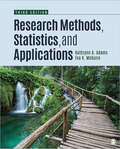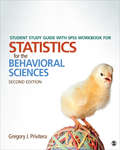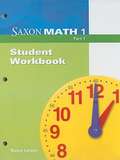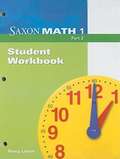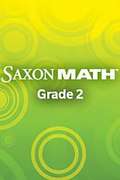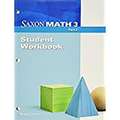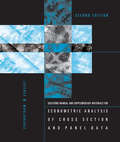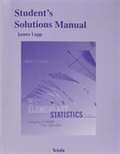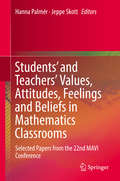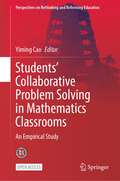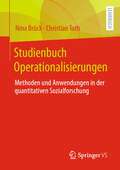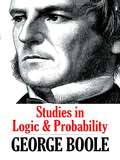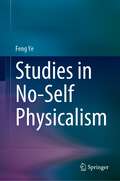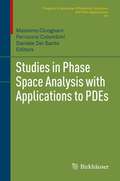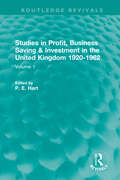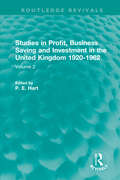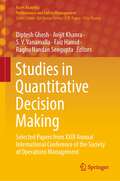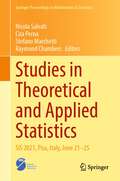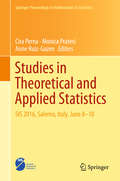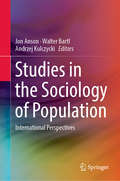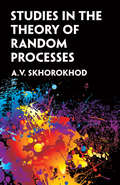- Table View
- List View
Student Study Guide With IBM® SPSS® Workbook for Research Methods, Statistics, and Applications
by Kathrynn A. Adams Eva Kung McGuire (aka: Lawrence)The third edition of the Student Study Guide With IBM® SPSS® Workbook for Research Methods, Statistics, and Applications by Kathrynn A. Adams and Eva K. McGuire gives students even more opportunities to practice and apply their knowledge in statistics and research methods. Written by the authors of Research Methods, Statistics, and Applications, the third edition of the study guide follows the third edition of the textbook for straightforward assigning and practice. New features include practice quizzes to give students both recognition and recall activities for better retention. Learning objectives and brief chapter summaries from the main text remind students of what they′ve learned and orient students toward the exercises. In-depth exercises encourage students to build on their knowledge, requiring students to think critically and actively engage with the material. These exercises have been condensed and focus on moving students through the learning objectives at a quick pace. At the end of most chapters, "Your Research" sections encourage students to apply concepts to their own projects. Now placed at the end of book, the IBM® SPSS® workbook provides instructions for performing statistical calculations. Included in this workbook are additional exercises to practice data analysis and interpretation using the software. Answers to quizzes are listed immediately after each quiz in the book while answers to exercises are listed on the instructor resources website.
Student Study Guide With IBM® SPSS® Workbook for Statistics for the Behavioral Sciences
by Dr Gregory J. PriviteraThe Student Study Guide With IBM® SPSS® Workbook for Statistics for the Behavioral Sciences, Third Edition includes a review of chapter learning objectives, chapter outlines and key terms, essential statistical formulas, special tips and insights for students, and chapter summaries. To help students practice skills, the guide offers word searches and crossword puzzles for each chapter, extensive practice quizzes linked to chapter learning objectives, and “SPSS in Focus” exercises which complement those in the core text.
Student Study Guide With IBM® SPSS® Workbook for Statistics for the Behavioral Sciences
by Dr Gregory J. PriviteraThe Student Study Guide With IBM® SPSS® Workbook for Statistics for the Behavioral Sciences, Third Edition includes a review of chapter learning objectives, chapter outlines and key terms, essential statistical formulas, special tips and insights for students, and chapter summaries. To help students practice skills, the guide offers word searches and crossword puzzles for each chapter, extensive practice quizzes linked to chapter learning objectives, and “SPSS in Focus” exercises which complement those in the core text.
Student Study Guide With SPSS Workbook for Statistics for the Behavioral Sciences
by Dr Gregory J. PriviteraThe Student Study Guide With SPSS Workbook for Statistics for the Behavioral Sciences, Second Edition, by Gregory J. Privitera, includes a review of chapter learning objectives, chapter outlines and key terms, essential statistical formulas, special tips and insights for students, and chapter summaries. To help students practice skills, the guide offers word searches and crossword puzzles for each chapter, extensive practice quizzes linked to chapter learning objectives, and “SPSS in Focus” exercises which complement those in the book.
Student Workbook, Saxon Math 2, Part 1
by Nancy Larson Roseann Paolino Maureen HannanNIMAC-sourced textbook
Student Workbook, Saxon Math 2, Part 2
by Nancy Larson Roseann Paolino Maureen HannanNIMAC-sourced textbook
Student Workbook, Saxon Math 3, Part 2
by Nancy Larson Sharon Molster Orio Jeanne Honore MillerNIMAC-sourced textbook
Student's Solutions Manual and Supplementary Materials for Econometric Analysis of Cross Section and Panel Data, second edition (The\mit Press Ser.)
by Jeffrey M. WooldridgeThis is the essential companion to the second edition of Jeffrey Wooldridge's widely used graduate econometrics text. The text provides an intuitive but rigorous treatment of two state-of-the-art methods used in contemporary microeconomic research. The numerous end-of-chapter exercises are an important component of the book, encouraging the student to use and extend the analytic methods presented in the book. This manual contains advice for answering selected problems, new examples, and supplementary materials designed by the author, which work together to enhance the benefits of the text. Users of the textbook will find the manual a necessary adjunct to the book.
Student's Solutions Manual for Elementary Statistics: Using the TI-83/84 Plus Calculator
by Mario F. Triola James LappThis manual contains completely worked-out solutions for all the odd-numbered exercises in the text.
Students' and Teachers' Values, Attitudes, Feelings and Beliefs in Mathematics Classrooms: Selected Papers from the 22nd MAVI Conference
by Hanna Palmér Jeppe SkottThis contributed volume is an exciting product of the 22nd MAVI conference, which presents cutting-edge research on affective issues in teaching and learning math. The teaching and learning of mathematics is highly dependent on students’ and teachers’ values, attitudes, feelings, beliefs and motivations towards mathematics and mathematics education. These peer-reviewed contributions provide critical insights through their theoretically and methodologically diverse analyses of relevant issues related to affective factors in teaching and learning math and offer new tools and strategies by which to evaluate affective factors in students’ and teachers’ mathematical activities in the classroom. Among the topics discussed: The relationship between proxies for learning and mathematically related beliefs.Teaching for entrepreneurial and mathematical competences.Prospective teachers’ conceptions of the concepts mean, median, and mode.Prospective teachers’ approach to reasoning and proofThe impact of assessment on students’ experiences of mathematics. Through its thematic connections to teacher education, professional development, assessment, entrepreneurial competences, and reasoning and proof, Students' and Teachers' Values, Attitudes, Feelings and Beliefs in Mathematics Classrooms proves to be a valuable resource for educators, practitioners, and students for applications at primary, secondary, and university levels.
Students’ Collaborative Problem Solving in Mathematics Classrooms: An Empirical Study (Perspectives on Rethinking and Reforming Education)
by Yiming CaoThis open access book provides key insights into the social fundamentals of learning and indications of social interactive modes conducive and restrictive of that learning in China. Combining theoretical and technical advances in an innovative research design, this book focuses on collaborative problem solving in mathematics to increase the visibility of social interactions in teachers’ designing, students’ learning and teachers’ instructional intervention. It also explores students’ cognitive and social interaction as well as teacher intervention in students’ group collaboration.
Studienbuch Operationalisierungen: Methoden und Anwendungen in der quantitativen Sozialforschung
by Nina Brück Christian TothDas Studienbuch liefert eine Einführung in die komplexen Operationalisierungsverfahren, die für die Analyse psychometrischer Konstrukte und die Konstruktion eines Messinstruments erforderlich sind. Die Autorin und der Autor zeigen die verschiedenen Schritte einer Operationalisierung vor dem Hintergrund eines breiten Begriffsverständnisses auf. Dabei werden die theoretischen Ausführungen durch praktische Beispiele verdeutlicht.
Studies in Logic and Probability (Dover Books on Mathematics)
by George BooleFrom one of the founders of symbolic logic comes this collection of writings on logical subjects and related questions of probability. George Boole invented Boolean logic, the basis of modern digital computer logic, for which he is regarded as a founder of the field of computer science. This authoritative compilation of his papers features his most mature thinking on Boolean logic and includes previously unpublished material.Appropriate for upper-level undergraduates and graduate students, the contents range from The Mathematical Analysis of Logic to Boole's final works, including The Laws of Thought, the most systematic statement of his ideas on logic and probability. Boole had intended to create a follow-up volume but did not survive to fulfill his ambition; this volume features his further studies on the subject.
Studies in No-Self Physicalism
by Feng YeThis book demonstrates how a radical version of physicalism (‘No-Self Physicalism’) can offer an internally coherent and comprehensive philosophical worldview. It first argues that a coherent physicalist should explicitly treat a cognitive subject merely as a physical thing and should not vaguely assume an amorphous or even soul-like subject or self. This approach forces the physicalist to re-examine traditional core philosophical notions such as truth, analyticity, modality, apriority because our traditional understandings of them appear to be predicated on a cognitive subject that is not literally just a physical thing.In turn, working on the assumption that a cognitive subject is itself completely physical, namely a neural network-based robot programmed by evolution (hence the term ‘No-Self’), the book proposes physicalistic theories on conceptual representation, truth, analyticity, modality, the nature of mathematics, epistemic justification, knowledge, apriority and intuition, as well as a physicalistic ontology. These are meant to show that this No-Self Physicalism, perhaps the most minimalistic and radical version of physicalism proposed to date, can accommodate many aspects that have traditionally interested philosophers. Given its refreshingly radical approach and painstakingly developed content, the book is of interest to anyone who is seeking a coherent philosophical worldview in this age of science.
Studies in Phase Space Analysis with Applications to PDEs
by Daniele Del Santo Ferruccio Colombini Massimo CicognaniThis collection of original articles and surveys, emerging from a 2011 conference in Bertinoro, Italy, addresses recent advances in linear and nonlinear aspects of the theory of partial differential equations (PDEs). Phase space analysis methods, also known as microlocal analysis, have continued to yield striking results over the past years and are now one of the main tools of investigation of PDEs. Their role in many applications to physics, including quantum and spectral theory, is equally important. Key topics addressed in this volume include: *general theory of pseudodifferential operators *Hardy-type inequalities *linear and non-linear hyperbolic equations and systems *Schrödinger equations *water-wave equations *Euler-Poisson systems *Navier-Stokes equations *heat and parabolic equations Various levels of graduate students, along with researchers in PDEs and related fields, will find this book to be an excellent resource. Contributors T. Alazard P.I. Naumkin J.-M. Bony F. Nicola N. Burq T. Nishitani C. Cazacu T. Okaji J.-Y. Chemin M. Paicu E. Cordero A. Parmeggiani R. Danchin V. Petkov I. Gallagher M. Reissig T. Gramchev L. Robbiano N. Hayashi L. Rodino J. Huang M. Ruzhanky D. Lannes J.-C. Saut F. Linares N. Visciglia P.B. Mucha P. Zhang C. Mullaert E. Zuazua T. Narazaki C. Zuily
Studies in Profit, Business Saving and Investment in the United Kingdom 1920-1962: Volume 1 (Routledge Revivals)
by P. E. HartThe results of the 1959 Glasgow University investigation into British industrial profit, business saving, and investment are the subject of this book, originally published in 1965. Part 1 presents original estimates of profits in British industries 1920-1938, which when linked with Government estimates of such profits since 1948, permit long runs studies of the fortunes of individual industries. In addition, the appropriation of profit between dividends and business saving is also estimated for manufacturing industry 1920-1938. Part 2 begins the analysis of the extensive financial data collected in the Glasgow enquiry and is concerned with the effects of the size of a firm on its financial performance. The financial performance of large companies quoted on the Stock Exchange with a sample of small unquoted private companies and unincorporated firms is compared.
Studies in Profit, Business Saving and Investment in the United Kingdom 1920-1962: Volume 2 (Routledge Revivals)
by P. E. HartOriginally published in 1968, this second volume of the Glasgow Studies in Profit, Business Saving and Investment uses the financial data assembled in Volume 1 to test economic theories of the factor distribution income, of the appropriation of profit, of the determinants of investment, and of the return on capital. The tests enabled the measurement of long-run and short-run variation of the ratio of profit to employee compensation in the United Kingdom at the level of individual industries and the whole industrial sector. As well as measuring the relationship between a company’s sales or profits and its expenditure on fixed assets, the book describes the long-term decline in the rate of return on capital in the UK and measures the effect of the intensity of competition on this return.
Studies in Quantitative Decision Making: Selected Papers from XXIII Annual International Conference of the Society of Operations Management (Asset Analytics)
by Raghu Nandan Sengupta Diptesh Ghosh Avijit Khanra S. V. Vanamalla Faiz HamidThis edited volume is an in-depth collation of the usage of different quantitative decision making techniques in practical areas such as lean & green supply chain, reverse logistics, perishable logistics, closed loop supply chain, sustainable project management, retail management, block chain applications, optimal supplier selection problem, demand/supply modelling, forecasting under uncertainties, scheduling & sequencing, resource constraint logistics, dynamic network supply chain, risk evaluation, and so on. Additionally, the book also solves these issues in theoretical and practical context using innovative mathematical tools. Consisting of selected papers from the 23rd Annual International Conference of the Society of Operations Management, this book's highlight is not only the coverage of interesting topics, but also how these topics are dealt with, such that post-graduate students as well as researchers and industry personnel working in areas like engineering, economics, social sciences, management, mathematics, etc., can derive the maximum benefit by reading or referring to this book. Apart from the emphasis on new mathematical, operations research, operations management, and statistical techniques, the authors also ensure that all the concepts are made clear by highlighting their practical significance in different areas of applications of operations management. By using novel presentation methods, the book offers a good practical flavor of all the different topics relevant to operations management in the coming decades.
Studies in Theoretical and Applied Statistics: SIS 2021, Pisa, Italy, June 21–25 (Springer Proceedings in Mathematics & Statistics #406)
by Cira Perna Nicola Salvati Stefano Marchetti Raymond ChambersThis book includes a wide selection of papers presented at the 50th Scientific Meeting of the Italian Statistical Society (SIS2021), held virtually on 21-25 June 2021. It covers a wide variety of subjects ranging from methodological and theoretical contributions to applied works and case studies, giving an excellent overview of the interests of the Italian statisticians and their international collaborations. Intended for researchers interested in theoretical and empirical issues, this volume provides interesting starting points for further research.
Studies in Theoretical and Applied Statistics: Sis 2016, Salerno, Italy, June 8-10 (Springer Proceedings In Mathematics And Statistics Series #227)
by Monica Pratesi Cira Perna Anne Ruiz-GazenThis book includes a wide selection of the papers presented at the 48th Scientific Meeting of the Italian Statistical Society (SIS2016), held in Salerno on 8-10 June 2016. Covering a wide variety of topics ranging from modern data sources and survey design issues to measuring sustainable development, it provides a comprehensive overview of the current Italian scientific research in the fields of open data and big data in public administration and official statistics, survey sampling, ordinal and symbolic data, statistical models and methods for network data, time series forecasting, spatial analysis, environmental statistics, economic and financial data analysis, statistics in the education system, and sustainable development. Intended for researchers interested in theoretical and empirical issues, this volume provides interesting starting points for further research.
Studies in the Sociology of Population: International Perspectives
by Walter Bartl Andrzej Kulczycki Jon AnsonThis book presents a cross section of the work and concerns of social demographers worldwide, covering a broad range of topics from social structure through population structure to social policy; from fertility and mortality through migration to the way in which organisations deal with the demographic environment in which they operate. Topics addressed also include morbidity and health profiles and transitions, as well as policies and programs concerned with these and other issues. <P><P> The volume touches on some of the major links between population and societal dynamics. It addresses demographic patterns and issues from micro-level, meso-level, and macro-level perspectives and helps put into focus the past, present and future of the mutual relations between population dynamics and societal responses. <P><P> With a unique introductory chapter discussing the global unevenness of population growth today, its associations with inequality and the challenges it presents for the future, and a truly international approach to social and demographic change and policy responses, this book will serve as a valuable resource for professionals and students in sociology, demography, social policy and local governance.
Studies in the Theory of Random Processes
by A. V. SkhorokhodThis text is devoted to the development of certain probabilistic methods in the specific field of stochastic differential equations and limit theorems for Markov processes. Specialists, researchers, and students in the field of probability will find it a source of important theorems as well as a remarkable amount of advanced material in compact form.The treatment begins by introducing the basic facts of the theory of random processes and constructing the auxiliary apparatus of stochastic integrals. All proofs are presented in full. Succeeding chapters explore the theory of stochastic differential equations, permitting the construction of a broad class of Markov processes on the basis of simple processes. The final chapters are devoted to various limit theorems connected with the convergence of a sequence of Markov chains to a Markov process with continuous time. Topics include the probability method of estimating how fast the sequence converges in the limit theorems and the precision of the limit theorems.
